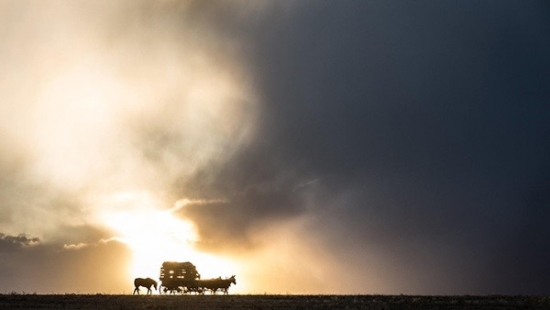I am thoughtful about how much our contemporary culture attends to its personal wounds. It has been a rallying cry since the 60s, not undeserved, not unfelt, but noticeable historically in the harsh story of our land how much the focus has changed from survival, civic service and duty to narcissism and hyphenated group suffering. This is an observation. Suffering is the constant. No time has been worse than any other for the individual in pain. No one group has a corner on it either.
Streaming Netflix continues to be a bargain for film fans. Last night I watched The Homesman.
It premiered in the fall of 2014 probably around the time I had to move out of my studio and leave New York. That is the only explanation I can find for never hearing about it. Directed by Tommy Lee Jones, it is the journey of his character and one played by Hillary Swank, two unlikely partners who join together to take three wives back East, women who have become psychotic from the wounds and trials of the Nebraska frontier life they endured in the late 19th century. The photography holds the narration complete. The set up of the steadfast and devout single woman and the off-the-grid man, the two together more sound and sane than the three psychotic women locked and tied in the wagon as they head east is the razor edge they traverse regardless of the cost. It echoes in all of us as the theme constant throughout human history. We do it because we keep our word, because it must be done and because that in spite of inner need we move to a higher cause. That is how this tale begins. The score is haunting, available on iTunes, and the cinematography, well, so minimal and cutting — a scalpel line of the plain to the sky — a razor slicing through lives unforgiving and binary. The final scene on the return West is a George Caleb Bingham brought to life. Watch and weep as we are reminded what generations before us endured and mankind continues to endure.


Recent Comments